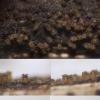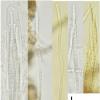
12-12-2025 18:39
Mirek GrycHello everyone.Macrofeatures similar to Mollisia b

09-12-2025 12:06
 Andgelo Mombert
Andgelo Mombert
Bonjour,Je recherche l'article concernant Hypobryo

07-12-2025 16:07
Arnold BüschlenHallo, ich habe in einer Moos-Aufsammlung (epiphy

08-12-2025 21:04
Mark Stevens"Hello everyone,I'm relatively new to microscopy (

08-12-2025 18:59
 Lothar Krieglsteiner
Lothar Krieglsteiner
.. found by a seminar-participant, I do not know t

08-12-2025 17:37
 Lothar Krieglsteiner
Lothar Krieglsteiner
20.6.25, on branch of Abies infected and thickened

16-03-2014 22:00
Hello,I found this species a few months ago but ha

08-12-2025 13:39
Thomas Læssøehttps://svampe.databasen.org/observations/10572899
this species was found on a dead, wet (but not submerged) culm of some reed-like grass in Styria, Austria (Central Europe). The ascomata seem to be seated on a blackish layer reminding of a subiculum but it's hard to say if that's just a coincidence or there's indeed a correlation. The same is true for the conidia that I found around the ascomata... in any case I wasn't able to find a helicosporous anamorph.
Ascospores measure about 80-127 x 3-3.5(3.8) µm, they are slightly sinuous and have obtuse, slightly swollen ends. I didn't count the number of septa of a whole ascospore but there are definitely >30 of them. Hairs are typically blunt, brown, and multi-septate. Accompanying conidia measure 32-38 x 7-9 or ca. 26.5 x 12 µm.
I have looked for a fitting species in the Tubeufiaceae but couldn't find anything so any suggestions are welcome!
Best wishes,
Gernot

the conidia observed remind me on Pseudospriropes simplex. Thus the "blackish layer" is possibly produced by a fungus like Strossmayeria basitricha.
I have no experience how ascomata of Tubeufia paludosa will mature (darker and with hairs?). But I see similarities with my find: http://www.ascofrance.fr/search_forum/12985
Attached another picture of this specimen, asci in BKB.
Best regards
Martin

I suspect the conidia are not directly connected to the teleomorph, Corynespora or one of the several similar genera possibly. Except the conidium at bottom left which looks like the very common Sporodesmiella hyalosperma - see: http://www.ascofrance.com/forum/25987/unknwn-asco-update
corialement
Chris
I agree, T. paludosa seems to come closest to this find. But the conspicuous hairs and very thin ascospores (according to Barr (1980), Rossman (1987) and Kodsueb et al. (2004) ascospores of T. paludosa are (2)3.5-7(8) µm wide!) leave me doubting. The width of the ascospores given in Samuels et al. (1979) for T. paludosa comes closer (3-5(5) µm) but that species described by Samuels et al. is certainly not the same as my collection... difficult group.
Hi Chris,
thanks for your suggestions regarding the anamorphs!
Best wishes,
Gernot



